Travels to Argyll and Iona
Good morning,
I thought I’d share a few photos from our recent holiday in Argyll and Iona. We were staying near a place of long human habitation, the Kilmartin Glen, and explored evidence of early patterns of belief.
There are a number of chambered cairns, burial sites from around the fourth millennium BC, such as this one:
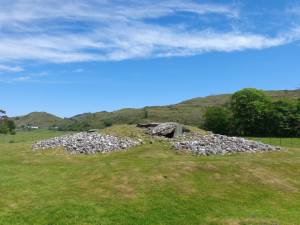
In the same landscape stone circles were built around 3000 BC such as this at Temple Wood:
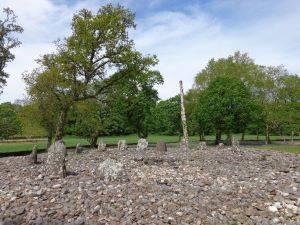
About a thousand years later graves were dug and bodies placed within stone cists within these circles.
Nearby, there are standing stones at Nether Largie from 1450-1200 BC.

It’s an extraordinary landscape of almost unfathomable time in the past, up to around 6000 years ago, in which people lived, had families, grew crops, tended animals, devoted time and labour to erecting patterns of stones, carving rock, and burying their dead in elaborate graves. We only have hints as to their patterns of belief, perhaps around the sun and moon, seasons and fertility.
Here are images from Argyll of Christian presence there. This is a free-standing high cross from the 700s within the chapel at Keills. It depicts a robed figure holding a Bible, lions, and St Michael slaying a dragon.
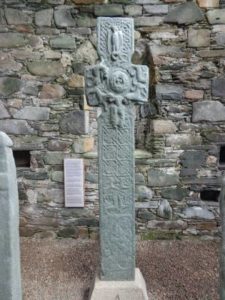
Much more recent is the beautiful, eclectic St Conan’s Kirk by Dalmally, an architectural confection by Walter Douglas-Campbell, begun in 1907 and drawing on a range of eras and styles for inspiration.
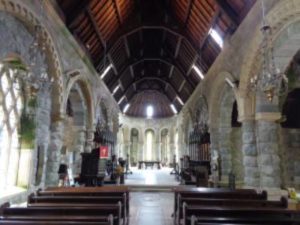
Finally, the bell-tower of All Saints Episcopal Church in Inveraray, which was begun exactly a hundred years ago, with a ring of ten bells which I know some of the St Salvator’s bell-ringers have visited and rung.
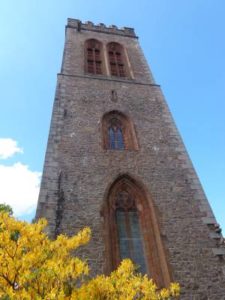
The next images will explore Iona a small island off the south-west coast of Mull, for all the heritage of faith found in buildings, I couldn’t help but feel that the landscape was as sacred as anything erected by human hands.

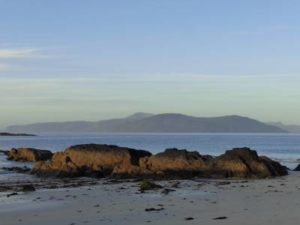

But of course, Iona has been associated with faith for many centuries.
Iona Abbey – on the site of St Columba’s monastery, built anew by the Benedictines, re-built in the 19th and 20th Centuries, refurbished over the past two years – is a beautiful centre for the work, worship and witness of the Iona Community.

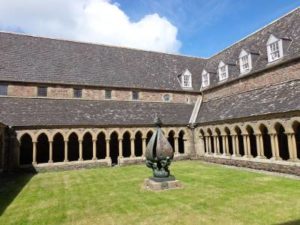
And in its museum is this fine grave-marker for Anna, Prioress of the nunnery on Iona, who died in 1543.
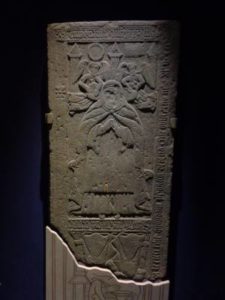
The final images show the religious heritage beyond the abbey.
This is MacLean’s Cross, from the 1400s, en route from the harbour to the abbey, a place of prayer for pilgrims and much-loved by islanders:
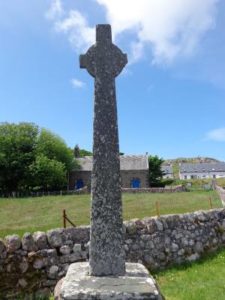
It stands near the simple Church of Scotland, built in 1828 as part of a parliamentary programme to supply churches to the Highlands and Islands.
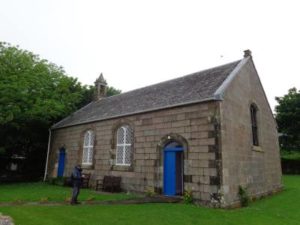
And finally, here is the grave-marker by St Oran’s Chapel for John Smith, who died suddenly while leader of the Labour Party in the British Parliament in 1994. His epitaph, An honest man’s the noblest work of God, may sound the sort of thing Robert Burns would say, but in fact it is from An Essay on Man by Alexander Pope.

I hope you have enjoyed a few images from our recent travels due west of St Andrews.
Yours,
Donald.
Revd Dr Donald MacEwan
Chaplain
